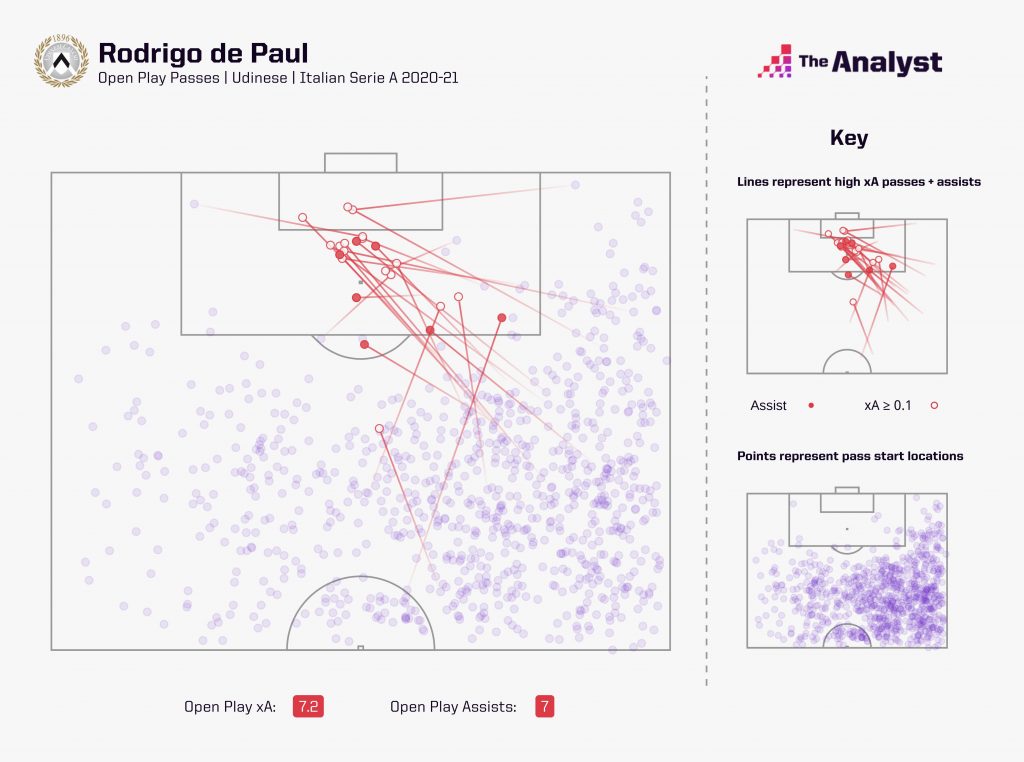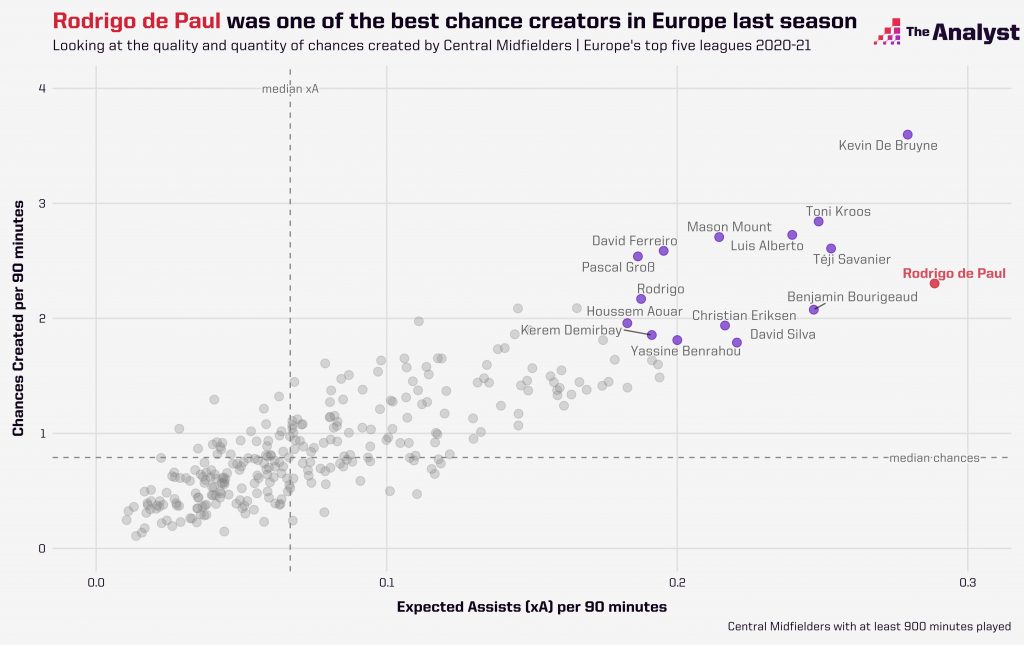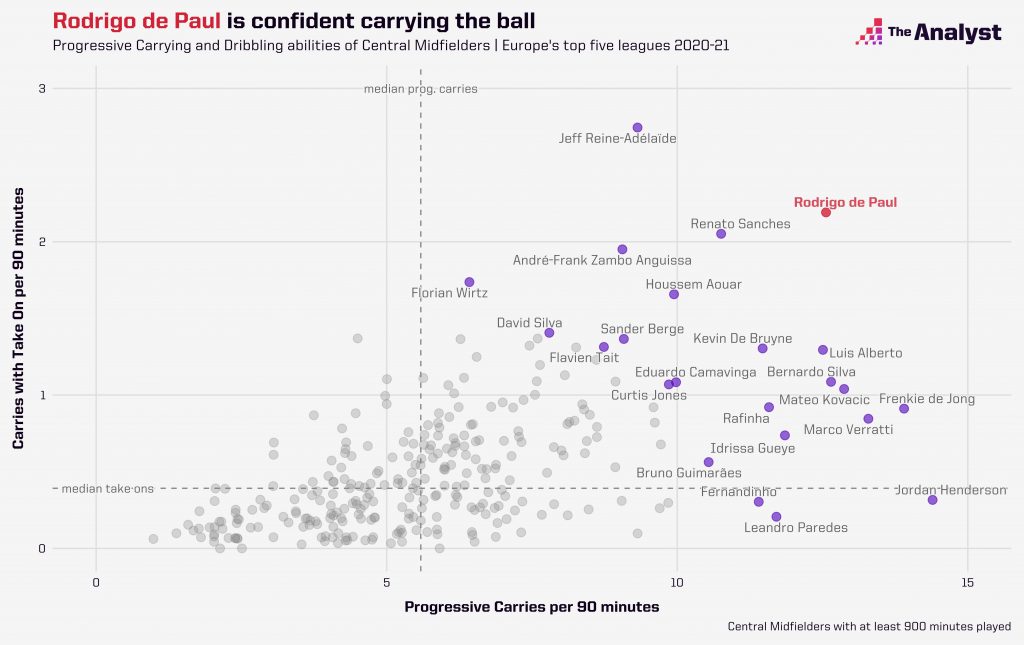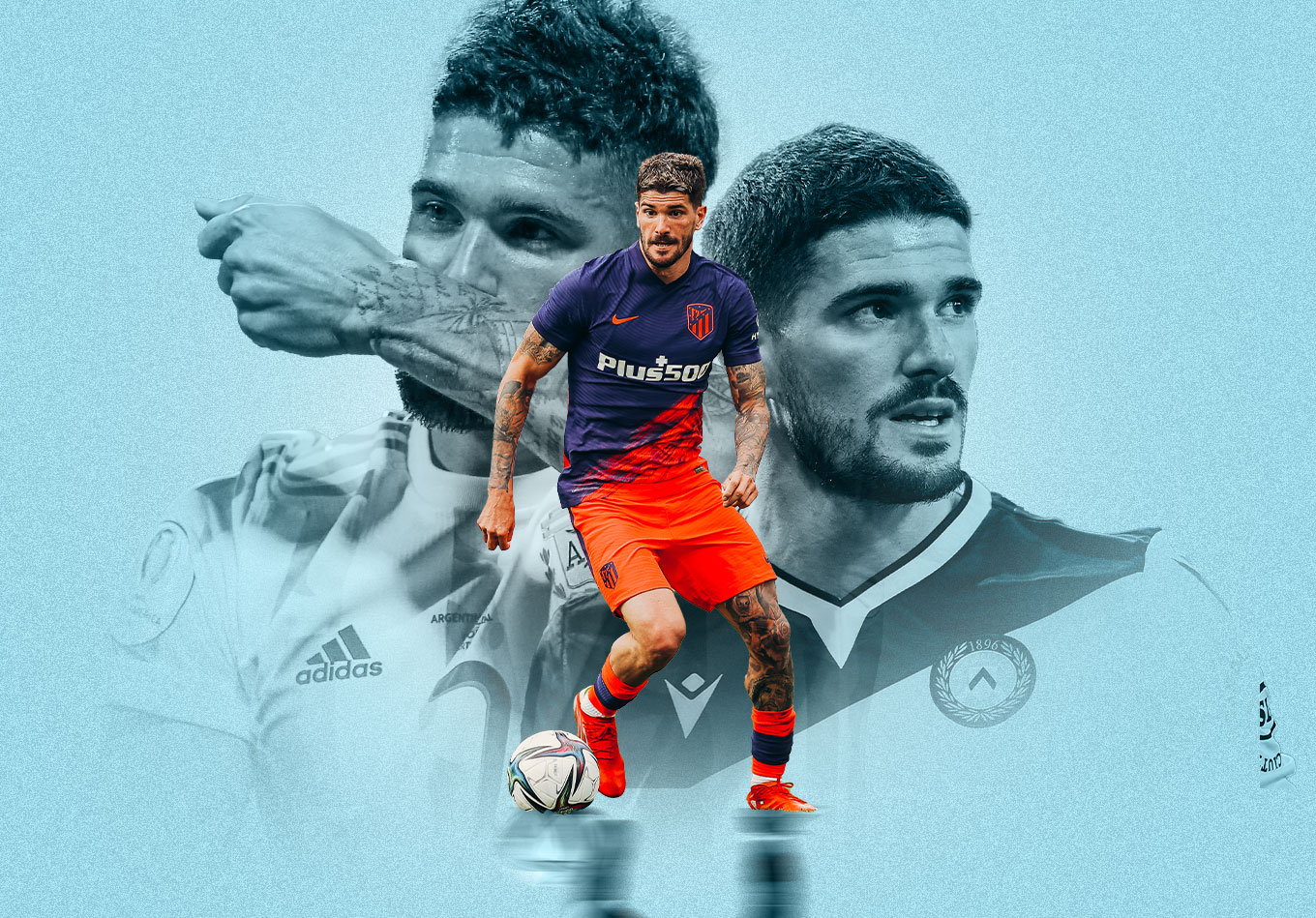When all is said and done, Atlético Madrid will hope 2021-22 will have been a tale of two Argentines. In pursuit of defending their title – which no team besides Barcelona and Real Madrid has achieved since 1984 – Atlético’s best attempt to reinforce their push has come through Rodrigo De Paul, a €30 million signing from Udinese, and summer star of Argentina’s success in the Copa America.
And then, there’s Lionel Messi.
Spanish football was rocked by the news of Messi’s departure this summer. Almost nothing that follows in La Liga can be viewed outside of this lens in the coming season, particularly when it comes to the title race. Barcelona’s loss propels them into unknown territory, facing a prospect they knew they would have to work out one day, but not this soon. And with Messi out of the picture for the first time in 17 years, competitors around the league woke up in a different world on the day he said goodbye.
It’s in this world that Atlético Madrid will get to launch a historic title defence. The first crack at the trophy in which Lionel Messi – a 10-time winner of La Liga and six-time Ballon d’Or recipient – will have no influence. The greatest player in the history of the competition is gone. In his place, as they hunt not only another title but perhaps a step up in the hierarchy in a post-Messi world, Atlético will hope to channel their ambitions through their own Argentinean star of Spanish football.
Rodrigo De Paul spent the first part of the European summer over in Brazil, where he flanked Messi as one of Argentina’s key players at the Copa America. After a relentless midfield performance in the final, he was the first player to embrace Messi at the final whistle – a fitting image for the country’s triumph. De Paul hadn’t needed the Copa America to earn Atlético’s approval, however. His signing had been in play before the tournament and waiting only on his return to Europe to complete.
Since leaving Spain in 2016 following an uncomfortable spell at Valencia – his first experience outside of South America – the intervening years put De Paul on a sure-fire path to return to the European elite. His five seasons in Serie A provided the settled environment for him to realise his potential, with a variety of factors all coming together over the years. The main one that gave to his rise – along with the natural benefits acquired through extended playing time – was his gradual re-positioning as a central midfielder, after years spent rotating between the wing, a No. 10 and as a second striker. The player who returns to Spain is now one of Europe’s most influential central midfielders.

De Paul led all players in Serie A last season for expected assists (10.3) and expected assists from open play (7.2). This was despite playing in a Udinese side that finished 14th in the table and only seven points from safety. Indeed, when ranking his numbers on a per 90 basis across the top five European leagues, the Argentinian’s exploits were even further enhanced against his fellow central operators. De Paul’s average of 0.29 expected assists per 90 led all central midfielders in this category, albeit in a neck-and-neck tussle with Manchester City’s Kevin De Bruyne.

The beauty of De Paul’s game, and the reason why his central midfield re-birth has been so successful, is that he hasn’t lost the attacking qualities that placed him further up the pitch earlier in his career. He has adapted to defensive duties without sacrificing that invention – even becoming noted for his intensity without the ball, as was on show very clearly for Argentina this summer. The 27-year-old was Udinese’s most influential player in possession by far last season, but comfortably featured as a defensive presence in an Argentina side who averaged just 49% possession in the Copa America.
Along with his general creativity, De Paul is one of Europe’s finest ball carriers in central areas. Again, owing to his experience as a winger and his South American style, his inherent comfort in dribbling with the ball has become one of his main tools in affecting the game as a central midfielder. And since reverting to this position full-time, the scope with which his ball-carrying has an impact has increased. Where he once operated as a winger playing high up the pitch, carrying the ball as a means only to try and generate advantageous positions in attack, De Paul is now a ball-carrying weapon all over the pitch: from escaping opposition pressure in his own half to driving into the final third.
Compared with central midfielders across the top five European leagues last season, De Paul ranked sixth for progressive carries per 90, and second for carries including take-ons per 90. Not only is he one of the most frequent drivers of the ball from central areas, but he also combines it with a high-end ability to dribble past opposition players. This is a significant part of Atlético Madrid’s attraction – acquiring a central midfielder who can regularly affect the game in an attacking sense, without sacrificing too much from a defensive standpoint.

Since winning La Liga for the first time under Diego Simeone in 2013-14, Atlético’s over-arching task has been exactly that: how to evolve their attacking play without losing the defensive solidity that birthed the club’s resurgence under him. It hasn’t been an easy path, as evidenced by the seven-season wait for their second title. There was a sense, however, that Atlético started to find the right balance in 2020-21. The new season will be a matter of building on it.
De Paul may be the club’s marquee signing of the summer for his individual ability, but his arrival also fits on the timeline with Atlético’s transitioning style. After using a 4-4-2 system almost entirely throughout his time in charge, Diego Simeone opened up to a level of flexibility previously unseen in 2020-21 – introducing wing-backs, three centre-back systems and much more dynamic shapes when going from in possession to without it. Atlético also recorded season-highs for average possession (52%) and passes per game (503) under Simeone in La Liga last season. That’s more than an extra 100 passes per game than they averaged in their first title-winning campaign in 2013-14 (402). Along with the rise of possession-based football at the top of the game, Atlético have had to adapt over the years in order to remain competitive against Barcelona and Real Madrid.
With De Paul joining from an Udinese side where he was embedded as a central midfielder within a 5-3-2 system, his fit in next season’s Atlético side is all but assured from a comfortability point. Simeone may not directly use a 5-3-2 all the time, but the shape of his side in possession often resembled one last season, with the inclusion of three central midfielders and wing-backs. With a strong structure around him, De Paul will have the liberty to dictate in possession and contribute towards the more proactive style that Atlético are seeking. Manuel Locatelli was the only midfielder who made more touches in Serie A last term than De Paul (2,871), who needs no invitation to take responsibility with the ball.
While Atlético have consistently been a formidable defensive unit, their attacking from open play has often lagged behind a number of other teams. They ranked fifth in La Liga last season for expected goals from open play (38.8), and quite a way behind the main competitors who they would still edge to the title. In order to have guarantees moving forward, particularly in defending their title this term, Atlético will need a stronger supply of creation throughout their team. Based on his performance in recent seasons, De Paul represents an opportunity for them to make ground in this area without overly weakening their defensive structure.
In a competition which no longer boasts the presence of Cristiano Ronaldo and Lionel Messi – the two individuals who spearheaded the success of their two main rivals over the previous decade – Atlético Madrid stand in front of a significant opportunity in 2021-22. With their major competitors in varying states of flux, looking for their new direction, Simeone’s side can at least count on the advantage of having the clearest sense forward. Without any major exits and only one significant arrival in De Paul, the club have only supplemented to their core while their competitors have faced notable disruption.
La Liga may have lost its most celebrated Argentinean this summer, but in the aftermath and all that comes next, Atlético will be looking to land a defining blow against Spain’s duopoly following the arrival of their own.
Enjoy this? Subscribe to our mailing list to receive exclusive weekly content.
Design by Matt Sisneros.
